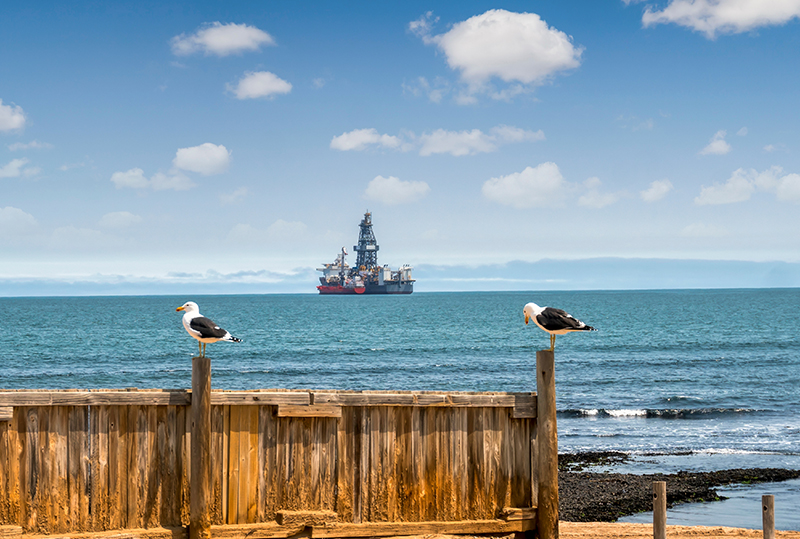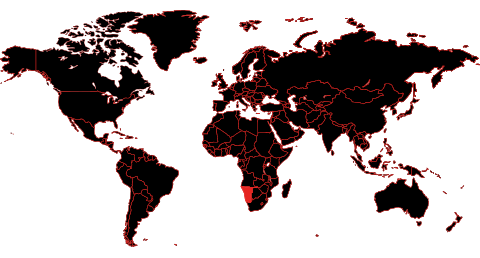The Gas Question: Is Namibia’s Oil Future More Complicated Than Expected?
A Growing Concern for Namibia’s Oil Boom
For months, Namibia has been making global headlines with a series of major oil discoveries in the Orange Basin. Shell, TotalEnergies, and Galp have all confirmed significant offshore reserves, and the country’s oil industry is on the verge of a major transformation.
But in May 2023, a new concern is emerging: high levels of natural gas in some of the discovered oil fields.
While oil is the primary driver of Namibia’s energy ambitions, natural gas changes the equation. It introduces both new opportunities and major challenges—and how the country handles this development will shape its long-term success as an energy producer.
Why It Complicates Oil Extraction?
Oil and gas often occur together in reservoirs, but too much gas can make oil extraction more difficult and expensive.
Reports from recent drilling operations indicate that:
• Shell’s Jonker-1X and TotalEnergies’ Venus fields have higher-than-expected gas content.
• This could mean lower-than-anticipated oil recovery rates unless additional investment is made in gas processing infrastructure.
• High gas content raises questions about how soon these fields can begin oil production.
Instead of seeing a straightforward oil boom, Namibia may now have to rethink its energy strategy to include gas utilization.
Gas Could Become a Strategic Asset
While excess gas poses challenges for oil production, it is also a valuable resource on its own. Many of the world’s leading energy producers—including Qatar, Norway, and the United States—have used natural gas to power their economies and export revenue.
A. The Case for Developing a Gas Industry in Namibia
• Domestic Energy Supply: Namibia currently imports most of its electricity. If gas is utilized effectively, it could become a reliable source of domestic power generation.
• LNG (Liquefied Natural Gas) Exports: If large-scale gas reserves are confirmed, Namibia could develop a liquefied natural gas (LNG) export industry, supplying gas to Europe and Asia.
• Industrial Development: A stable gas supply could support the development of petrochemical industries, fertilizers, and manufacturing.
Namibia is now facing a critical policy decision—should it focus solely on oil, or should it begin investing in gas infrastructure?
Lessons from Other Gas-Rich Nations
The challenges Namibia faces today are not unique. Many countries have discovered oil only to realize that gas was a much bigger part of their reserves than expected.
Nigeria’s Example: The Gas Dilemma
Nigeria, one of Africa’s largest oil producers, spent decades flaring gas because it lacked the infrastructure to capture and use it. As a result, billions of dollars in lost energy resources were wasted.
Namibia must avoid this mistake.
Mozambique’s LNG Strategy: A Model for Namibia?
Mozambique, a neighboring country, turned its gas discoveries into one of Africa’s largest LNG projects. Global energy companies have invested billions into Mozambique’s gas sector, turning it into a future energy powerhouse.
If Namibia follows a similar model, it could become a key LNG supplier to international markets.
What Namibia Must Do Next to Maximize Gas Potential
Instead of viewing gas as a problem, Namibia should use this opportunity to diversify its energy industry.
Key actions to take in 2023:
Assess Full Gas Reserves – Conduct further exploration to determine the commercial viability of large-scale gas production.
Develop a National Gas Strategy – Define how gas will be used for domestic energy, industry, and exports.
Attract Gas Infrastructure Investments – Secure partnerships for LNG plants, pipelines, and gas-to-power projects.
Strengthen Environmental Policies – Gas flaring must be avoided, and carbon capture technology should be implemented.
Namibia is still in the early days of its oil boom, but how it handles its gas resources will determine the long-term stability of its energy industry.
As of May 2023, Namibia is realizing that its energy future is more complex than expected. While oil is the driving force of its current boom, natural gas could be an equally important resource—if managed correctly.
If Namibia makes the right strategic moves now, it could:
• Create a multi-energy economy that includes both oil and gas.
• Reduce its dependence on energy imports by using gas for domestic power.
• Position itself as a global LNG supplier, boosting long-term energy revenues.
The next few months will be critical in shaping Namibia’s gas policy and determining whether it will be an energy leader or just another resource exporter.
Key sources:
•Shell Internal Report (Jul 2023) – Evaluating Gas-Oil Ratios in Namibia’s Offshore Wells
•TotalEnergies Market Update (Jul 2023) – How Gas Discoveries are Reshaping Namibia’s Energy Strategy
•African Business Review (Jul 2023) – The Gas Challenge: What it Means for Namibia’s Oil Boom
Earth Day 2025 – Our Power, Our Planet
“Our Power, Our Planet” — the theme of Earth Day 2025 — is not just a rallying cry for envir
Positioning Namibia’s Youth at the Center of Its Energy Future
Namibia stands at a pivotal moment in its national development, faced simultaneously with a signific
What Every Namibian Student and Entry-Level Professional Should Know About the Upstream Oil & Gas Sector
The upstream oil and gas industry in Namibia is no longer a theoretical possibility—it is a rapidl




